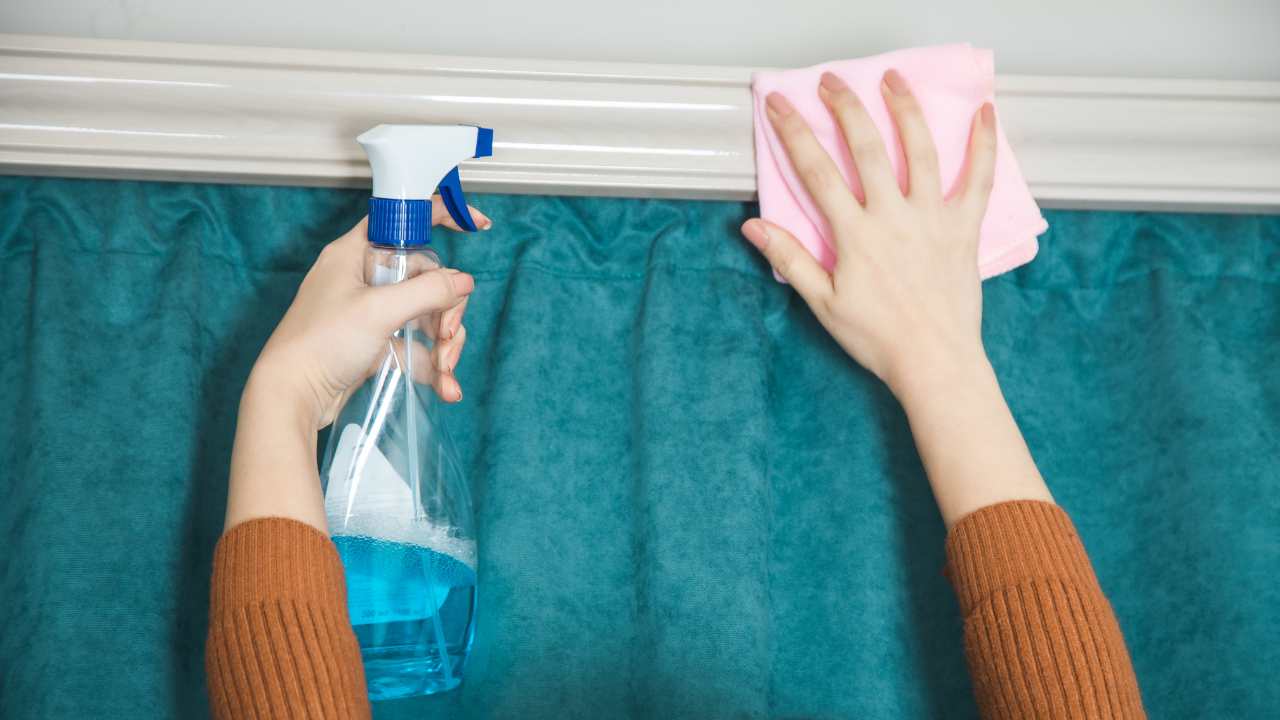Worried about damaging your paintwork while cleaning trims and mouldings? It’s a common concern, one harsh scrub or wrong cleaner, and you’re left with peeling paint or dull finishes.
That’s why knowing how to clean skirting boards, doors & cornices without damaging paintwork is so important for maintaining a fresh, polished look.
In this blog, we’ll explore how to clean skirting boards, doors & cornices without damaging paintwork and simple methods for tackling each area with care.
Let’s start!
Why Proper Cleaning Matters for Painted Surfaces?
Painted surfaces like skirting boards, doors, and cornices may look tough, but using the wrong products or techniques can lead to fading, flaking, or scratches. Paintwork is often more delicate than it appears, especially around corners, edges, and mouldings.
That’s why taking extra care when cleaning is so important. Regular dusting and gentle cleaning help extend the life of your paint without risking damage. This is especially true in homes with pets, children, or high-traffic areas where marks build up quickly.
How to Clean Skirting Boards Without Scratching Paint?

Skirting boards tend to collect dust, scuff marks, and dirt, especially near floor level. But cleaning them the wrong way can leave visible damage on your paintwork.
Dust First with a Soft Cloth or Brush
Use a dry microfibre cloth or a soft-bristled brush to gently remove loose dust and cobwebs. Avoid using stiff brushes or rough sponges, which may scratch the surface, especially on satin or gloss finishes.
Use a Mild Soap and Warm Water Mix
Mix a small amount of mild liquid soap in warm water. Lightly dampen a soft cloth and wipe down the boards. Avoid soaking the cloth, too much moisture can seep into the edges and damage paint.
Avoid Harsh Chemicals or Abrasive Pads
Stay away from bleach, ammonia, or strong cleaners that can strip or discolour paint. Also avoid abrasive pads or scrubbing sponges. For stubborn marks, try a magic eraser sparingly and test on a hidden spot first.
Dry Thoroughly After Cleaning
Once clean, dry the skirting boards immediately with a fresh cloth.
Learning how to clean skirting boards, doors & cornices without damaging paintwork starts with gentle tools, the right cleaning solution, and extra care on every edge. Keep it simple, slow, and always test first.
How to Clean Painted Doors from Handles to Hinges?

Here's how to clean them without damaging the finish.
Wipe Down Handles and Edges First
Door handles and edges are high-contact areas. Use a microfibre cloth slightly dampened with warm, soapy water to clean these spots first. Be gentle to avoid wearing away the paint around frequently touched areas.
Follow the Grain or Panel Shape
If your door has panelling or a visible wood grain, clean along those lines. This helps you reach into corners and prevents streaks from forming on flat sections. Always work from top to bottom for the best results.
Avoid Excess Water or Spray Cleaners
Spraying cleaner directly onto the door can cause drips and paint damage. Instead, spray onto your cloth first, then wipe. Avoid over-wetting the surface—moisture near door frames or hinges can weaken the paint over time.
Use a Soft Toothbrush for Crevices
Dust and grime often build up in corners or around decorative trim. A soft toothbrush helps gently lift dirt without scraping the paint. Just dip it in soapy water and brush lightly in small circles.
Dry Immediately with a Clean Cloth
After cleaning, always dry the door with a fresh, dry cloth to avoid watermarks or swelling around edges. This step also helps preserve the paint’s finish and avoid streaks.
How to Clean Cornices Without Dripping or Damage?

Here’s how to clean them safely while protecting your paintwork.
Use an Extendable Duster or Microfibre Wand
Start by dry-dusting your cornices using a long-handled microfibre tool. This helps remove loose dust and cobwebs without climbing or dripping water onto walls. Avoid feather dusters, which can scatter dust rather than trap it.
Lightly Mist a Cloth Instead of Spraying Directly
If you need to use a cleaner, avoid spraying it straight onto the cornice. Instead, mist a soft cloth and gently wipe the surface. This method reduces the risk of drips and avoids wet patches running down painted walls.
Work in Small Sections to Stay in Control
Tackle one area at a time, especially if your cornices have intricate detailing. This gives you better control over moisture and pressure. It also ensures you can check for any soft or damaged spots as you go.
Avoid Harsh Scrubbing or Abrasive Tools
Never use scouring pads or stiff brushes on cornices, especially if they’re painted plaster or wood. These can chip paint and damage delicate edges.
Conclusion
Cleaning painted surfaces takes more than just a quick wipe, it requires care, the right tools, and a bit of know-how. In this guide, we’ve shown you step-by-step tips on how to clean skirting boards, doors & cornices without damaging paintwork, helping you maintain a fresh, tidy look throughout your home. From gentle dusting to safe spot-cleaning, small changes in your cleaning method can protect your paintwork long-term.
If you'd rather leave it to the pros, Perfect Clean is here to help. Contact us today to schedule a cost effective deep cleaning and we'll respond within 2 to 4 hours. For urgent help, give us a call and we’ll get to you quickly.














